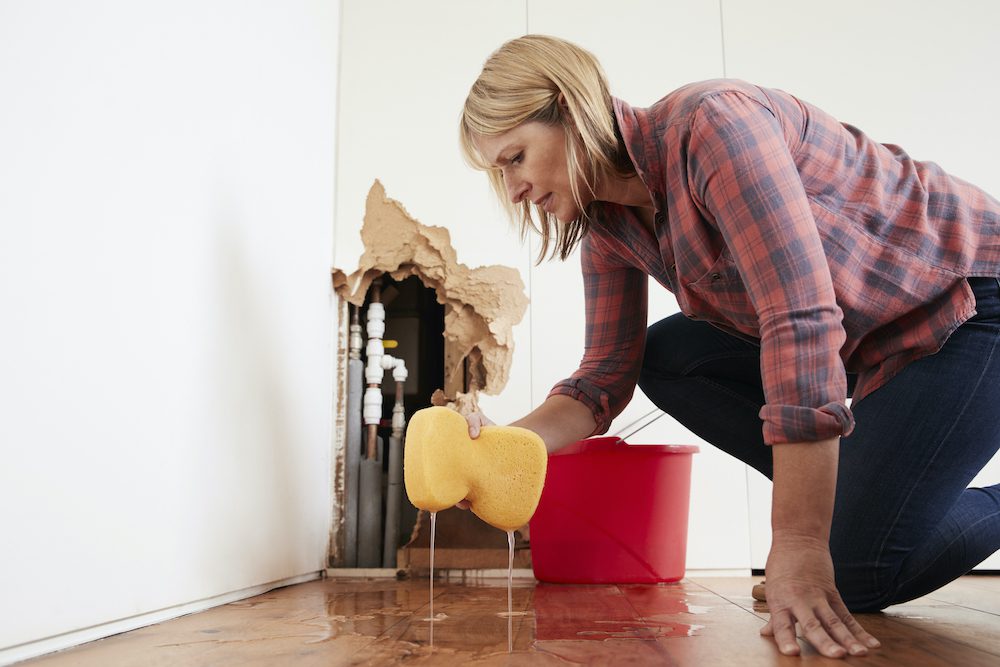They are making a few good pointers on the subject of Finding hidden leaks as a whole in the article further down.

Early discovery of leaking water lines can alleviate a prospective calamity. Some little water leaks may not be noticeable.
1. Analyze the Water Meter
Every residence has a water meter. Checking it is a surefire way that helps you uncover leakages. For beginners, shut off all the water sources. Ensure no one will flush, utilize the tap, shower, run the cleaning equipment or dish washer. From there, go to the meter and watch if it will transform. Because no one is using it, there should be no movements. That suggests a fast-moving leak if it relocates. Likewise, if you detect no changes, wait a hr or more and examine back once more. This suggests you may have a slow leak that can even be below ground.
2. Inspect Water Intake
Assess your water expenses as well as track your water intake. As the one paying it, you should discover if there are any type of discrepancies. If you spot sudden changes, regardless of your usage coinciding, it indicates that you have leaks in your plumbing system. Bear in mind, your water expense should drop under the same range monthly. An abrupt spike in your costs indicates a fast-moving leakage.
A stable rise every month, also with the same routines, reveals you have a slow leakage that's also slowly escalating. Call a plumber to thoroughly check your residential or commercial property, specifically if you feel a warm location on your flooring with piping below.
3. Do a Food Coloring Examination
30% comes from commodes when it comes to water consumption. Test to see if they are running correctly. Drop specks of food color in the tank and wait 10 minutes. There's a leakage between the tank and dish if the color somehow infiltrates your dish throughout that time without flushing.
4. Asses Exterior Lines
Do not forget to examine your outside water lines also. Test faucets by attaching a yard hose. Must water seep out of the link, you have a loosened rubber gasket. Replace this and make sure all connections are tight. If you've got a lawn sprinkler, it will certainly assist get it expertly analyzed as well as preserved every year. One small leakage can lose tons of water as well as spike your water expense.
5. Analyze the circumstance and evaluate
Homeowners ought to make it a habit to examine under the sink counters as well as even inside closets for any type of bad odor or mold development. These two warnings show a leak so punctual attention is needed. Doing regular assessments, also bi-annually, can save you from a major trouble.
Check for stainings and deteriorating as many pipes as well as appliances have a life span. If you think leaking water lines in your plumbing system, do not wait for it to rise.
Early discovery of leaking water lines can alleviate a prospective calamity. Some little water leakages might not be visible. Checking it is a surefire method that assists you find leaks. One little leakage can squander heaps of water and also spike your water costs.
If you believe leaking water lines in your plumbing system, do not wait for it to intensify.
How to Know If Your Home Has a Hidden Leak
Water Meter Reveals Inexplicable Water Usage
If you’d like to test whether or not there’s a leak somewhere in your home, you can do this using your water meter. Here is how to conduct the test:
Don’t use any water in your home for at least 30 minutes; this also means not turning on faucets or water-using appliances.
Go outside, and check your water meter for activity.
If your water meter shows that there was activity, even though no one was using any water, this proves that there is a leak in your home.Visible Mold or Mildew Growth
Leaks behind walls create moist, dark environments that allow mold and mildew to grow and thrive. Eventually, you might see mold growth forming on the wall closest to a hidden leak.
If mold is growing in an area that receives a high amount of moisture, such as a bathroom, it may simply be an indication that better ventilation is needed. However, if you see mold growth on a wall or the ceiling in an area where you would not expect, you probably have a hidden leak.
Musty, Mildew Odor
Sometimes you might not be able to see the mold or mildew that is growing as a result of a leak. However, the smell can give the problem away just as easily. If you catch a whiff of something musty, there’s a good chance that old water is collecting somewhere in your home that you can’t see.
Stained/Warped Walls, Ceilings, or Floors
When your home soaks up water, a variety of red flags can become visible, including ceiling stains, bubbling drywall, warped walls, and sagging floors. While these issues can be caused by excess humidity, they can also be signs that a pipe or plumbing connection has started leaking behind your walls.
Inexplicably High Water Bill
After a while, you get a general sense for what your water bill should be. If you own a pool or sprinkler system, your bill will tend to be higher during summer. However, if you receive a water bill that seems especially high, and you can’t figure out what caused it, then you may have a hidden leak somewhere that’s increasing your bill.
https://www.plumbingjoint.com/blog/2019/july/how-to-know-if-your-home-has-a-hidden-leak/

I'm certainly very interested by Top leak detection hacks and I am praying you enjoyed reading our blog post. Sharing is good. Helping others is fun. I recognize the value of reading our article about Detecting hidden plumbing leaks.